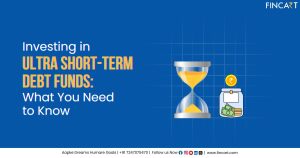Mutual funds and stocks stand as two of the most favoured investment vehicles for investors. An exchange traded fund or ETF, is a type of vehicle that combines the diversification of mutual funds with the trading flexibility of stocks. Because both mutual funds and ETFs pool money from a large number of investors and offer the benefit of built-in diversification, both these options can seem similar which can cause some confusion for investors trying to decide between ETF funds vs mutual funds.
However, there are some key differences between MF vs ETF which play an important role in determining which option would best suit an investor’s financial goals, investment horizon, and risk tolerance. Let’s understand what these differences are so you can confidently pick the right investment vehicle between ETF or mutual fund.
Key Differences Between ETFs and Mutual Funds
The difference between ETF and mutual fund is summarised below:
| Factor | Mutual Funds | Exchange Traded Funds |
| Trading | Can only be bought or sold after the end of the day when the market closes, at the prevailing NAV. | Can be traded anytime during the day on stock exchanges. |
| Minimum Investment Amount | Some mutual funds require you to invest a minimum amount. | ETFs don’t have a minimum investment requirement. You can start investing just by buying a single share. |
| Liquidity | Units can only be bought or sold once per day, making mutual funds comparatively less liquid. | Offer much higher liquidity as they can be traded whenever the market is open. |
| Style of Management | Mutual funds are actively managed (except index funds) as fund managers invest in various securities depending on market conditions and research. | ETFs try to mirror a particular index, which means they are passively managed. |
| Cost | Higher expense ratios for funds that are actively managed. | The expense ratio is lower. |
| Tax | Not as tax efficient. | ETFs offer higher tax efficiency. |
| Price | NAV of a fund is declared once a day after the market closes. | ETF prices change throughout the day. |
| Diversification | More diversified as they offer exposure to a much wider range of securities. | ETFs mirror an index, so their level of diversification is determined by the index they track. |
| Portfolio Holdings | Assets within the portfolio are declared by the AMC every month or quarter. | Assets in an ETF portfolio are generally declared daily. |
The main difference between MF vs ETF lies in how they are traded and managed. Most mutual funds are actively managed and cannot be traded, whereas most ETFs are passively managed and can be traded in the stock market like regular stocks.
ETF or mutual fund? Which is right for you?
The choice between the two vehicles depends on a number of factors such as financial goals, risk tolerance, and style preference.
Generally, ETFs are suitable when:
- Investors trade actively.
- Investors want to take advantage of short-term price fluctuations.
- Inventors want to mirror market returns.
- Investors are looking for a more tax-efficient and cost-efficient option.
- Investors want flexibility in their investments.
- Investors want more control and can pay attention as they have to make buy or sell decisions themselves.
On the other hand, investing in mutual funds is beneficial when:
- Investors are looking to beat market returns.
- Investors seek slow and steady growth over time.
- Investors make frequent contributions, such as through Systematic Investment Plans.
- Investors prefer a professional manager to make decisions for them.
- Investors prefer a wider range of investment securities.
- Investors are less concerned with real-time trading and prefer a more hands-off approach.
Types of ETFs and Mutual Funds
The choice between ETF or mutual fund can be further made clearer by understanding the types of ETFs and mutual funds available in the market.
Types of Mutual Funds
| Category of Mutual Fund | Description |
| Equity Funds | More than 65% of the fund’s assets are allocated to equities, that is, stocks of different companies. This category can be further divided into large-cap, mid-cap, and small-cap funds. These funds offer high rewards but also come with high risk. |
| Debt Funds | These funds allocate most of their assets to fixed-income securities like bonds, and instruments like t-bills, CDs, and CPs. These are considered the safest types of mutual funds. |
| Hybrid Funds | These funds combine equity and debt funds. Based on the asset allocation, hybrid funds can be either debt-oriented, equity-oriented, or balanced. |
| Index Funds | These funds are passively managed as they aim to mirror a particular index such as Nifty 50. Due to passive management, the expense ratio is lower for index funds. |
| Equity Linked Savings Scheme | These funds invest primarily in equities and are also known as tax-saver funds. Under Section 80C of the Income Tax Act, these funds offer investors a deduction of up to Rs. 1.5 lakh, but also come with a lock-in period of 3 years. |
| Open-ended Funds | Most funds in the market are open-ended, which means they do not have a fixed maturity date and allow investors to enter and exit at any time they want. The Asset Management Company is allowed to issue an unlimited number of units based on investor demand. |
| Closed-ended Funds | These funds issue only a fixed number of units, the prices of which do not depend on the NAV of the fund. As a result, units are bought or sold above the NAV (premium) or below it (discount). |
Types of ETFs
| Category of ETF | Description |
| Equity ETF | These ETFs invest in stocks and are designed to track the performance of a specific stock index, such as the Nifty 50 or Sensex. |
| Bond ETF | These ETFs invest in fixed-income securities like government and corporate bonds. They are considered more stable and less risky than equity ETFs. |
| Commodity ETF | Investment is made in physical commodities like gold and oil. Through these ETFs, one can gain exposure to a commodity without having to physically buy it. |
| Sector ETF | These types of ETFs target specific sectors, such as pharma, energy, and technology. |
ETF vs Mutual Fund: Investment Strategy
Choosing between MF vs ETF depends on your investment goals and what type of investor you are. Mutual funds are suitable for achieving a variety of financial goals and are versatile enough to cater to investors with varying risk tolerances. Equity funds and equity-oriented hybrid funds can beat market returns but also come with high risk in the short term. They also offer you the option to invest via lump sum or through SIP. If you want to invest consistently and take advantage of rupee cost averaging and compounding interest, a mutual fund SIP would be more suited to you.
ETFs, on the other hand, do not offer a way to make consistent investments. They do, however, allow you to start with a single share as there is no minimum investment amount requirement. They offer much higher liquidity as the shares can be bought or sold anytime the market is open. They are passively managed and aim to mirror specific indexes, so their returns may not match those of actively managed mutual funds. If actively traded, ETFs can also incur higher costs, but their expense ratio is lower as they are passively managed by the fund manager.
Pros and Cons of ETFs and Mutual Funds
And finally, let’s have a look at the advantages and disadvantages offered by ETF funds vs mutual funds:
Pros and Cons of Mutual Funds
| Pros of Mutual Funds | Cons of Mutual Funds |
| Offer built-in diversification. | Actively managed funds have higher expense ratios. |
| Are professionally managed. | Can only be traded once per day after the markets close at the prevailing NAV. |
| Allow disciplined investing through SIPs. | Not as transparent as ETFs as the portfolio holdings are declared monthly or quarterly. |
| Harness the power of compounding returns. | Equity-based funds are considered risky in the short term. |
| SIPs offer affordability and flexibility. | A minimum investment amount may be required to start. |
Pros and Cons of ETFs
| Pros of ETFs | Cons of ETFs |
| ETFs offer high liquidity as they can be traded on the exchange, just like stocks. | Price can be volatile due to intraday trading. |
| No minimum amount is needed to invest in ETFs. Investors can start by buying a single unit. | Frequent buying and selling can add to brokerage fees and taxes. |
| Due to passive management, the expense ratio is lower. | ETFs don’t offer a way to invest consistently like mutual funds do through SIPs. |
| Portfolio holdings are revealed every day, so they are more transparent than mutual funds. | ETFs track the performance of a specific index, so they don’t offer market beating returns. |
| Like mutual funds, ETFs also offer built-in diversification. |
Conclusion
The main difference between ETF and mutual funds lies in how they are bought and sold. ETFs can be traded on exchanges, so their price can fluctuate throughout the day. Mutual funds can only be bought or sold once the market closes at the NAV which is declared daily. ETFs are also generally passive vehicles which aim to mirror a particular index. Mutual funds such as index funds can be passive, but largely mutual funds are actively managed by a professional manager who tries to beat the market. Due to this ETFs have lower expense ratios compared to mutual funds.
The choice between ETF funds vs mutual funds depends on an investor’s goals and how they approach investing. Mutual funds are generally favoured by investors due to SIPs, which allow them to make consistent investments into a fund that matches their investment horizon and risk appetite. Both options have their set of pros and cons.
For example, mutual funds offer active professional management and are better-suited for long-term investors, while ETFs give you more control over trading and are considered more cost and tax-efficient. At the end of the day, choosing between the two depends on your investment style, risk tolerance, and financial goals.




